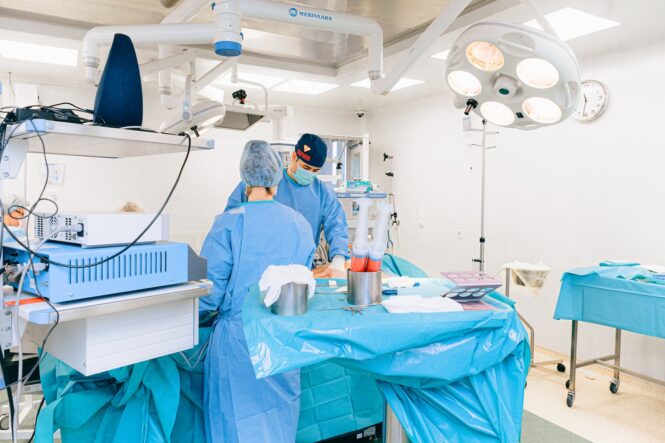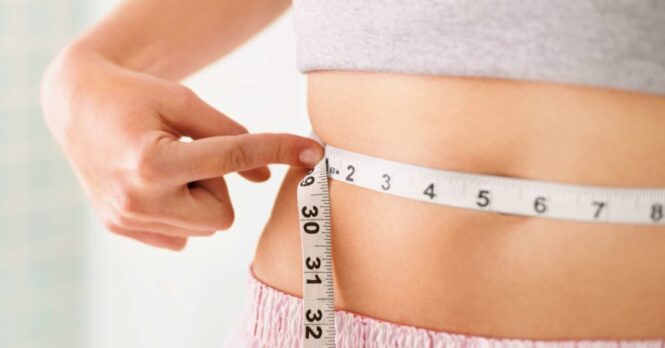If you want to experience fast weight loss in a targeted area, then liposuction provides a potential benefit. It can help you to get rid of the love handles or muffin tops that are too stubborn to disappear through your lifestyle changes.
When you remove fat through liposuction from the abdominal area, then it can increase the risk of gaining it back around the belly as the visceral form. This type stores around your organs, increasing the risk of type 2 diabetes, heart disease, and several other chronic conditions.
Research indicates that choosing to exercise after having this fat removal procedure can counter the body’s desire to make deposits around your waistline.
Why Is Liposuction an Effective Choice?

The first and best option for weight loss should always be lifestyle changes. When you eat healthier foods and start an exercise routine, then you can establish new habits that can lead to long-term success.
Some people can make these changes successfully while their body refuses to remove specific pockets of fat. That’s when liposuction becomes a potential option. Plastic surgery could also be an option of a person’s skin stretched out because of the increase in size to their fat cells.
Liposuction permanently removes fat cells from the body. When you lose weight, they tend to shrink in size instead of disappearing through absorption.
That outcome is the reason why it can be a practical choice for some people. It is also essential to remember that this procedure is intended for cosmetic purposes only. If you want to use it as your initial effort to fit into your older clothes, the liposuction provider might encourage you to try losing weight using other methods first.
How to Rev Up Your Metabolism for Weight Loss

The benefit of liposuction is that you see an immediate change in your body shape. Most procedures allow you to get back to your regular routine after a day or two.
The disadvantage of choosing liposuction for weight loss is that the body compensates for the lack of fat cells in a specific area. This procedure doesn’t change the hormones or metabolism issues that lead to the physical process of energy storage.
If you are thinking about liposuction or recently had a procedure completed, then knowing how to rev up your metabolism is going to help you get ready for the future.
Here are some ideas for you to implement, starting today.
-
Start working on building some muscle
Did you know that your body is constantly burning calories? Even if you are binge-watching a new show on Netflix, your couch-sitting requires energy. Having your metabolic rate rise means that you need to start building some muscle. Each pound of muscle mass burns six calories per day to sustain itself, while fat cells need about two calories. Try starting an exercise routine that includes bodyweight resistance to begin this process.
-
Step into your workouts
Aerobic exercise doesn’t build up big muscles to make you look like an action movie superstar, but it can keep your metabolism boosted for several hours. Unless donning socks from the 80s and using steppers is your thing, anything that pushes your heart rate to near its maximum is going to be helpful. Running, cycling, hiking – whatever activity you prefer, add more of it to your life.
-
Give your body some liquid courage

If you are dehydrated, then your body doesn’t have enough water to process the calories you consume. This outcome causes your metabolism to start slowing down. If you can drink eight glasses of water daily, then you’ll burn more calories than someone who consumes half of that amount. Coffee and tea generally count toward this total, but any sweetened beverages, diet sodas, or energy drinks go against your total.
-
Shift your perspective on protein
Having a big steak can be a nice treat. It shouldn’t be the usual dinner option. Red meat isn’t necessarily bad for you, but it can have a high-fat content that can be problematic to the metabolism of some individuals. Try to use leaner options to support your weight loss goals, including tofu, beans, seafood, chicken breast, and white-meat turkey. Then include a handful of low-fat dairy servings each week to make sure you’re getting enough calcium each day. Be careful what you eat and make sure to include proper supplements into your diet, such as this one on Scrutiny Portal.
-
Stop the crash dieting trend
A crash diet involves eating about 1,000 calories less per day than usual. Although creating a deficit is a good idea, you can have too much of a good thing here. What you want to do for your metabolism is to support its exact needs for what you hope to accomplish. Eliminating food groups can result in poor nutrition that slows down your physical processes instead. That’s why you can gain weight faster than before you started dieting once you stop following the artificial eating trend.
Why Metabolism Support is Essential After Liposuction

When you lose about 5% of your body weight, then multiple benefits to your health can happen. For every 10 extra pounds that you carry, your knees are supporting 40 pounds of pressure. Your lower body joints encounter the same problem.
The extra fat also causes more inflammation because of the shift in hormone production that happens. When you work to increase your metabolism after losing those problematic fat pockets, then you can ease these effects significantly.
It can even help you to reduce the risks of developing arthritis later in life.
Supporting a healthy metabolism can also give your HDL cholesterol numbers a bump in the right direction. You want this kind in your body because it works to clear out the LDL that is in your blood. When you can balance these numbers at a healthy level, then the risks of developing heart disease can decrease.
Liposuction can kickstart your weight loss plans because it creates instant results with a minimal amount of healing required afterward. It isn’t a long-term solution, which is why metabolism support must be your next priority.
 Imagup General Magazine 2024
Imagup General Magazine 2024



